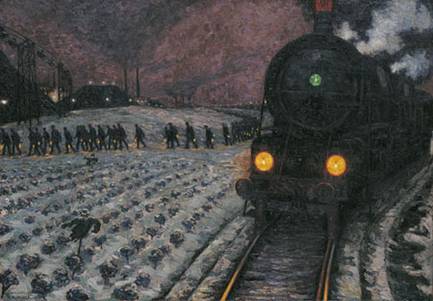In the Villa Oppenheim, the works of the Charlottenburg Art Collection are on public display for the first time in one place.
Hans Baluschek, Zur Grube, 1914 – Hans Baluschek, Zur Grube, 1914. Museum Charlottenburg-Wilmersdorf
© Museum Charlottenburg-Wilmersdorf
The collection resulted primarily from purchases made by the Charlottenburg Deputation for Art Purposes and the foundation of the private Raussendorff Art Collection.
Represented in the collection are the artists of the newly founded Berlin Secession, who presented their works for the first time in spectacular exhibitions in Charlottenburg from 1899 onwards, including Walter Leistikow, Franz Skarbina and Max Liebermann. Selected works by these modern Secessionists and their successors were purchased by the elected deputies of the city council in their studios and workshops and at the major art exhibitions for the new city hall, where they were hung and displayed in the representative rooms.
The extensive art collection of the Berlin factory owner and patron Hugo Raussendorff (1832-1908) came into the possession of the City of Charlottenburg as a foundation in 1912. A multifaceted collection of paintings, graphics and sculptures, which the donors Antonie and Hugo Raussendorff had previously exhibited in their prestigious city villa on Kurfürstendamm, including works by Eduard Schleich, Franz von Defregger and Constantin Meunier, can also be seen in the exhibition rooms on the upper floor. This coherent presentation of a private art collection of the 19th century is the only one of its kind in Berlin.
The young city of Charlottenburg was on the threshold of the 20th century: a city on the upswing - in 1904 it advanced to become the richest city in Prussia - empty walls in the newly built city hall and empty squares in an expanding city. Countless artists who had recently come to live in Charlottenburg and, in the administration, art-minded men who had not only the economic interest but also the intellectual life of the city in mind.
Runtime: from January 2012
Takes place here:
